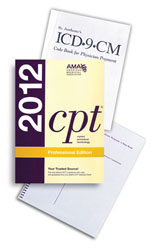 |
A. Yes. Ophthalmologists may find a reduction in their reimbursement on specific imaging services due to the “imaging cap.” The affected imaging services in ophthalmology are: indocyanine-green angiography (92240), fundus photos (92250) and endothelial cell count photography (92286). If the physician reimbursement for the technical component of the service calculates higher than the outpatient facility rate, the physician reimbursement is reduced to the outpatient value. The interpretation reimbursement (modifier 26) is not affected.
Q. Is Medicare reimbursing bandage contact lenses with the code 92071 for the fitting of the lens and 99070 for the supply?
A. No. Despite the direction in the 2012 Current Procedural Terminology manual to bill separately for the supply, Medicare considers CPT code 99070 to be a bundled code and not reimbursed in addition to the procedure code.
Q. Were changes made to CPT code 92072 for fitting a contact lens for keratoconus?
A. Yes; in April, the Centers for Medicare & Medicaid announced that the indicator published in January was incorrect and changed it from a unilateral indicator to a bilateral indictor. The change was retroactive to January 1, 2012.
Q. Did the new drug aflibercept (Eylea) receive its own unique Healthcare Common Procedure Coding System code for physician billing?
A. Yes, in a recent public notice, CMS noted that a new HCPCS code, Q2046, is in effect. In Transmittal 2450 to Medicare Administrative Contractors (MACs), and MM7854 for providers and other suppliers, Q2046 is described as “Injection, Aflibercept, 1 mg.” The new HCPCS code was effective on July 1, 2012. Q2046 is specifically described as “1 mg”; the usual aflibercept dose per eye is 2 mg. Use “2 units” on your claims after July 1, 2012.
The old C9291 code and associated units remain in effect for dates of service through June 30, 2012, after which it will be deleted from hospital outpatient department and Ambulatory Surgical Center payment systems. For physician claims, some MACs may prefer that another code for the supply of aflibercept be used instead of Q2046; be sure to check before filing claims.
| ||||||||||||||||||||||||||||||||||||||||||
Q. Are there any other new codes of interest to ophthalmologists?
A. Yes, there are. HCPCS code S0596, phakic intraocular lens for correction of refractive error, was introduced effective April 1, 2012. No relative value units were assigned. This is a refractive procedure, not covered by Medicare and rarely covered by other third-party payers.
Q. Will ICD-10 be implemented on October 1, 2013?
A. No. In April 2012, the Department of Health and Human Services announced a proposed rule delaying compliance for ICD-10 to October 1, 2014. The proposed rule was open for public comment through mid-June with an expected announcement of a delay to be published late this summer.
Q. Is the Recovery Audit Contractor program continuing to find overpayments?
A. Yes. A recent report indicated that in FY 2010 (October 2009 to September 2010), the RAC program collected $75.4 million in overpayments. In FY 2011, collections were $797.4 million. The last quarter of 2011 yielded $397.8 million; this brings the program total to $1.27 billion as of December 31, 2011.
Q. Is CMS continuing to make bonus payments under the PQRS and eRx bonus programs?
A. Yes. Payments for successful participation in 2011 should be made late summer or early fall.
Q. When will it be necessary to meet the Stage 2 meaningful use requirements for the Health Information Technology bonus program?
A. In February 2012, the proposed Stage 2 requirements were released. CMS pushed back the start date for Stage 2 compliance to January 1, 2014.
Q. Did CMS finalize the Quality Measure specifications for ambulatory surgery centers?
A. Yes. HCPCS Level II G codes have been assigned to the five quality measures that ASCs must report. A detailed discussion of the codes can be found in the CMS ASC Quality Measures Specifications Manual dated April 2012.
Q. When are ASCs required to begin reporting these measures?
A. ASCs must report these measures beginning October 1, 2012; however, they may report them on claims after April 1, 2012.
Q. Are there additional quality measures for ASCs beyond the five assigned Level II G codes?
A. Yes. Two additional measures exist. They are:
- ASC – 6: Safe surgery checklist use 2012;
- ASC – 7: 2012 Volume of Certain Procedures.
The safe surgery checklist use will be reported through a Web-based tool on the QualityNet website (
qualitynet.org). ASCs must report the use of the safe surgery checklist as a “yes” or “no” in 2012, following the implementation schedule.
Q. What procedures should be “counted” for reporting quality measure number seven?
A. ASCs will collect and report the aggregate count of surgical procedures per category for January 1 to December 31, 2012. In ophthalmology, there are eight categories of interest that will be reported through a Web-based tool on the QualityNet site. Please see Table 1 for the detailed list. REVIEW
Ms. McCune is vice president of the Corcoran Consulting Group. Contact her at
DMcCune@corcoranccg.com.



